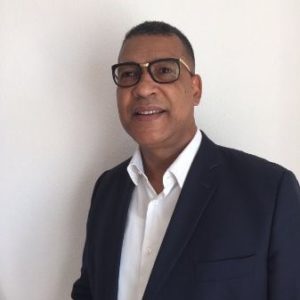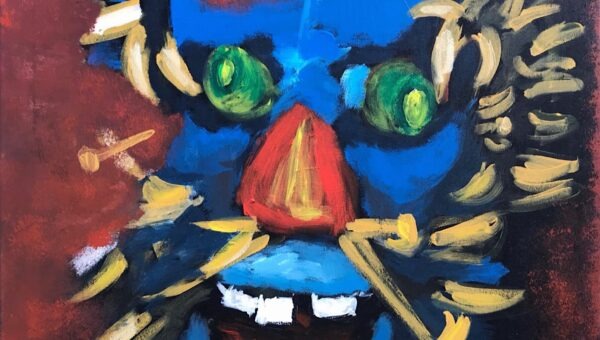According to the International Renewable Energy Agency, the demand for electricity will triple on the African continent by 2030. It is worth looking into some of the “renewable” solutions that are spreading throughout Africa to meet the energy shortage.
Burkina Faso scored a huge hit by inaugurating, in March 2018, the largest hybrid thermal/solar (thermal and solar energy) plant in the world (nothing short of that!), with a 15 Mw capacity.
However, the installation of this plant also leads to a number of questions regarding the implementation of this type of “renewable” solution on the African continent.
As a reminder, this plant aims to supply the Essakane mine, a gold mining site belonging to an international mining group.
It was announced that Eren RE, the company that installed the photovoltaic panels, is the owner of the power plant in partnership with the African Energy Management Platform. It should be emphasized that the project would not have been possible without the financial investment of the Burkina Faso subsidiary of BNP Paribas.
But what is the benefit of this plant that combines photovoltaic panels and fuel oil, for which it was necessary to disburse more than 20 million dollars? What are its limits? How does this type of venture work?
These are many of the questions Luc Tanoh answers in the interview I had with him. It gives rise to deeper thoughts on the structuring of such projects in Africa and the issues at stake.
Luc Tanoh is a recognized expert on these subjects. He manages the West Africa branch of CRONIMET Mining Power Solutions.

Luc TANOH’s Interview
What is the advantage of hybrid plants compared to other types of plants?
Luc Tanoh (LT): A photovoltaic/diesel solar hybrid plant can operate 24 hours a day. So even at night. Whereas a solar power plant needs sunshine and will only work during the day.
Diesel can compensate for higher energy demand when needed. But this can also be done with batteries that store solar energy produced during the day. More generally, the electricity grid must be composed of an energy mix in order to cover a high energy demand.
If this is not the case, the hybrid plant is not more economically advantageous than if the structure includes two independent projects (solar and thermal).
However, concerning thermal/solar hybrid plants, a major problem is that solar energy is too intermittent for current African power grids…
Exactly. For instance, there are only few grids in African countries that can absorb electricity from a large solar power plant; whereas the energy from thermal plants is more stable and absorbable by our grids. This is why we need hybrid plants.
In fact, the fuel portion of a hybrid plant should be viewed as a small thermal power station.
In your opinion, why would this type of plant be built on this model that does not seem to make much sense economically?
LT: This is a very rational model if the mine to which this type of plant is connected operates in three 8-hour stretches as must be the case for the Essakane plant, I assume.
However, this is no longer relevant if there were generators already installed before establishing this hybrid plant.
If the energy producer is contractually responsible for the production of energy 24 hours a day, it is quite possible that he had installed his own new equipment which he knows how to operate rather than having to work with obsolete and poorly maintained old rotating machinery.
Is this Essakane power plant, a project the mining company set up simply to appear “green”?
LT: Not necessarily. The mining company saves energy during the day (using solar energy). And we can assume that the new generators have a better output than old rotating machines.
Before the recent inauguration, in March 2018, of the largest hybrid-fuel plant (thermal and solar energy) in the world, the largest solar farm in West Africa was created in November 2017 in Zagtouli, also in Burkina Faso. I was funded by the European Union and the French Development Agency. Why, as it is the case for the Essakane plant, is funding external?
LT:In the case of an Electricity Purchase Agreement, the reality is that it is impossible for local banks to offer the same level of collateral and financial conditions as external parties.
The best illustration is the projects financed by the World Bank Scaling-Solar program in Senegal with a tariff of the Electricity Purchase Agreement of €3.8 cents per KWh (25 CFA / KWh) against €10 cents (65 CFA/KWh) on previous projects!
The price in the Electricity Purchase Agreement is set at 98% according to the financial conditions and guarantees of the customer.
To put it simply, Freelance Power Producers are the private partner of the States and sign supply contracts with the national electricity distribution companies. Then, the company distributes via its network.
It is often this independent producer who will go looking for funding. In traditional schemes, these producers finance projects with up to 75% in debt and 25% in equity.
In November 2017, in an interview with Jeune Afrique, Christophe Fleurence, Eren’s Vice-President pointed out that the Essakane power plant project had been set up “without any public subsidy […] without guarantees provided by the Burkinabe State”.
However, the Burkinabe President subsequently inaugurated and congratulated the project. How to analyze this attitude judged by Eren RE as a lack of confidence in a project considered “too innovative”?
LT: That’s a good question.
Our states are not always able to provide sovereign guarantees. Guarantees must be put in place through specialized financial institutions such as Guarantco, African Trade Insurance (ATI), OPIC, MIGA, etc.
How should (African) states proceed in order not to be the big losers of such deals and ventures?
LT:Note that you are asking someone who is in the other camp, the Independent Energy Producers (smiles)…
We must do as in Europe, or as in the Scaling-Solar program of the World Bank or in South Africa:
- Control costs spent on clean energy concepts;
- Offer guarantees against defaulting by the national electricity companies (the majority of whom have to clean up their finances), in order to lower the costs of the debt;
- Create a healthy environment with a competent and independent regulator;
- Make calls for tenders.
But there are arrangements whereby states can also have options to invest and hold shares in such projects, right?
LT: This is not how I understand the role of states in these types of projects.
But, yes, there are some…
This is called “Sweet Equity”, where, against facilitation by the State of administrative procedures, granting of the production site, etc., the State is given a percentage (5 to 10% in general) at the end of the project.
Then there are investment vehicles. Like those of the VRA (Volta River Authority), KENGEN (Kenya Electricity Generating Company), or FONSIS (Sovereign Funds Strategic Investment of Senegal), where states invest directly in cash in projects. The case of Senegal is, from this point of view, interesting with 2 different stances held by the investing State. Or as in the case of the SENERGY power plant (with the operator Meridiam), the State is a developer and seeks operators, etc.; or it is a simple investor, as in the case of the TEN MERINA power plant where it simply bought back 10% of the shares.
From this point of view, for African States, forcing their entry into capital does that not allow them to acquire experience simply?
LT: Again, I think it’s not the role of States. They build roads, universities, schools and hospitals…
What they can do, on the other hand, is to clean up the sector and allow for IPPs by guaranteeing and paying the Electricity Purchase Agreements.
States must supervise and regulate, they can take minority shares in IPPs but not become actors. States must act as catalysts. This has worked very well with cell phones, so we have to do the same thing with IPPs. We all remember the prices charged by the national companies (PTT) at the time and the lack of infrastructure.
Thank You Luc Tanoh…


